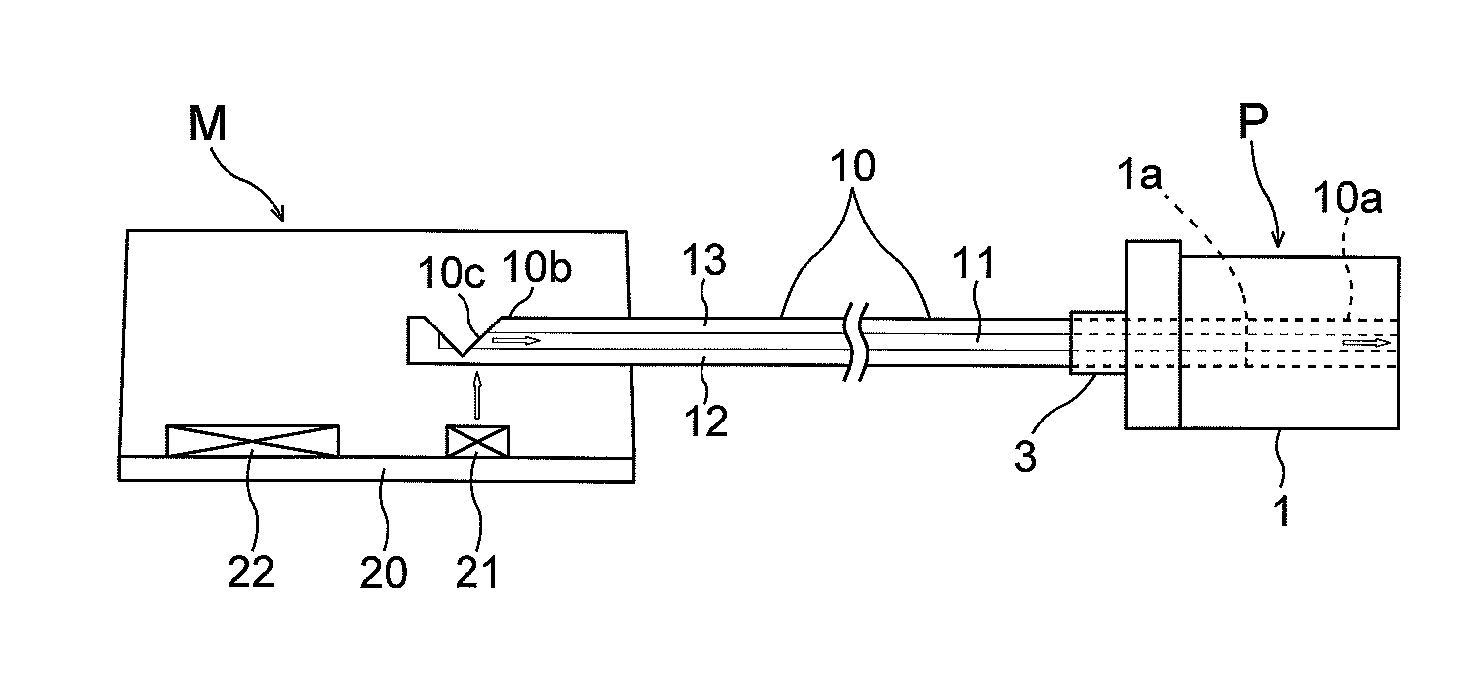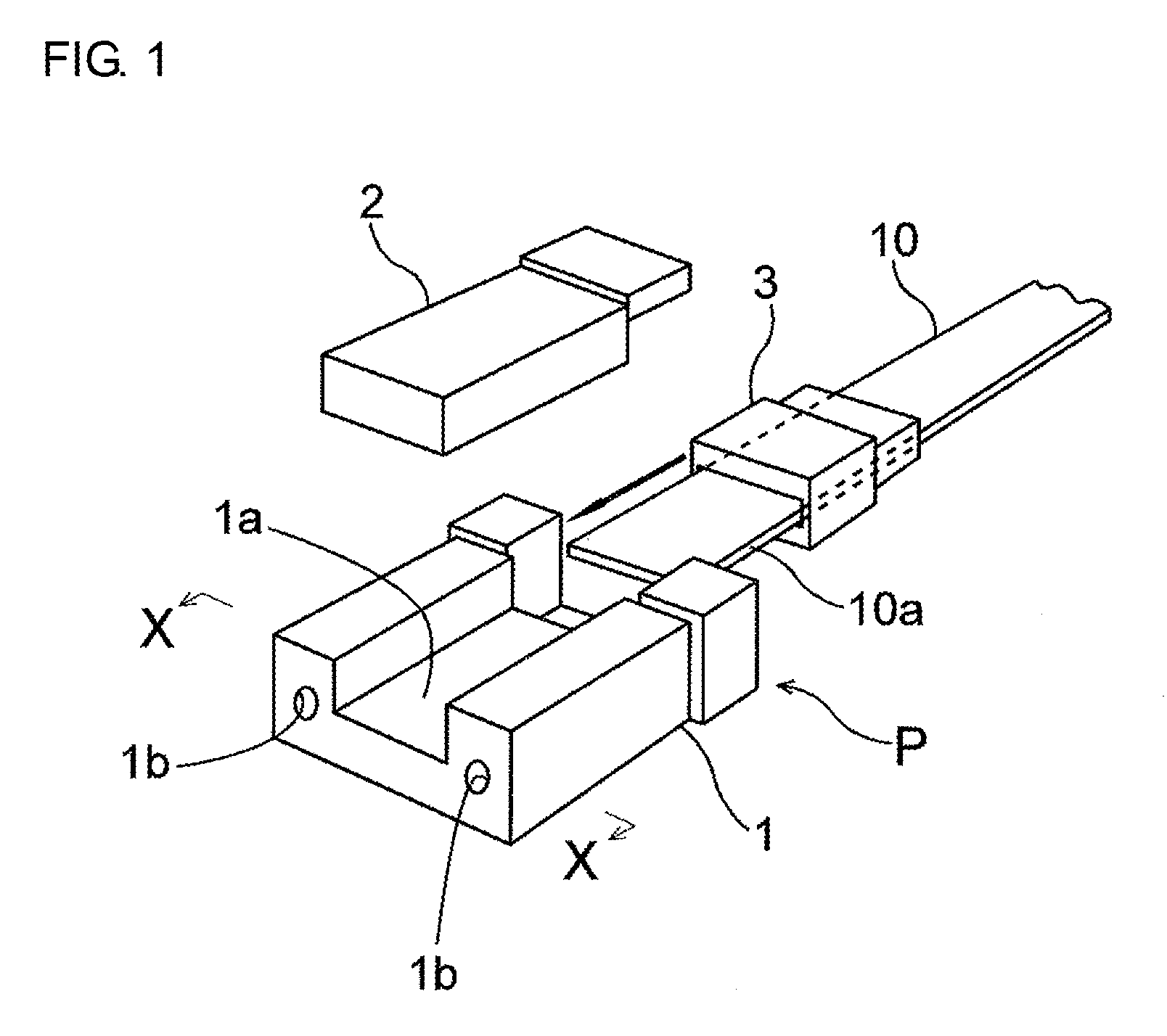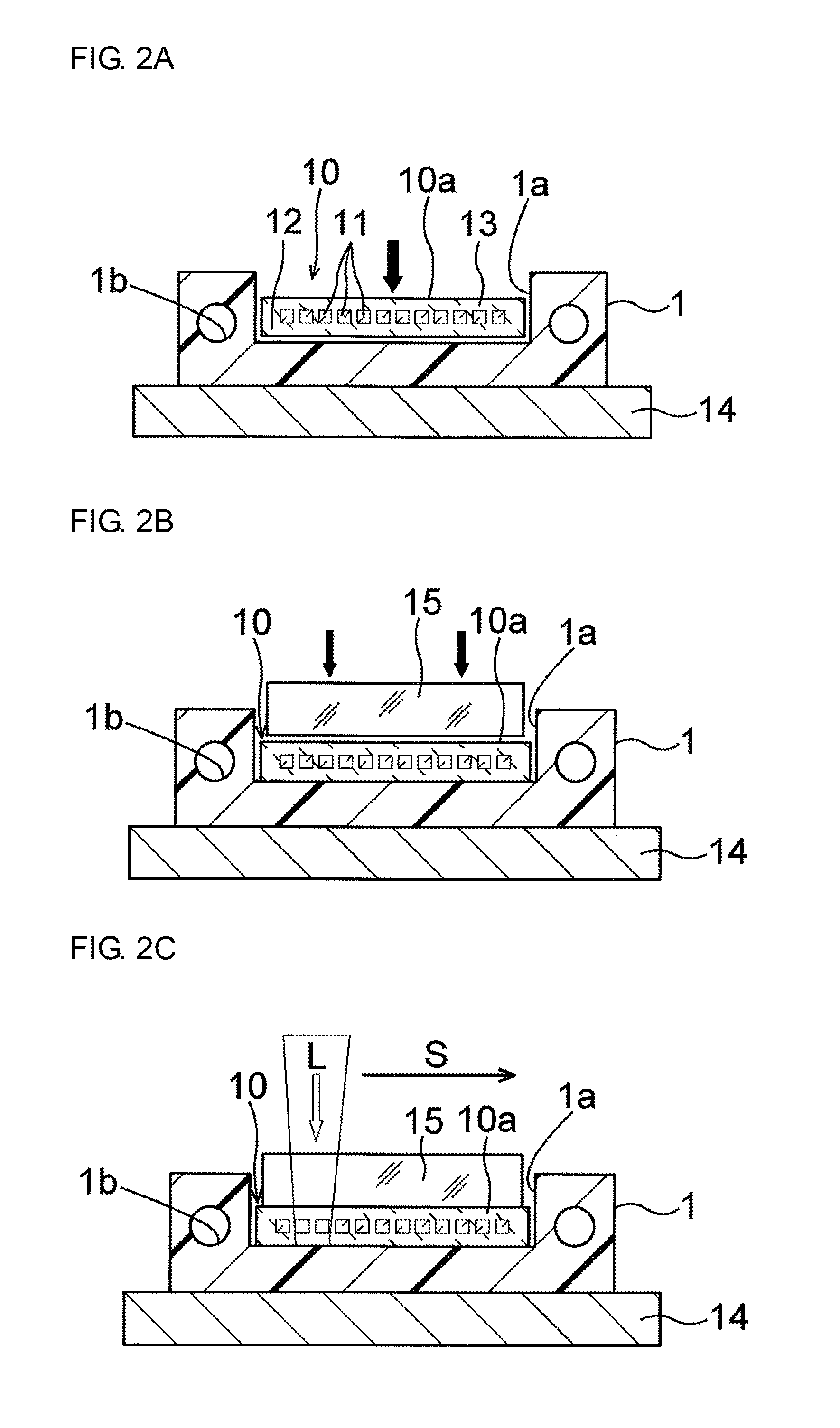Manufacturing method for an optical connector
a manufacturing method and technology of optical waveguides, applied in the field of manufacturing methods of optical waveguides, can solve the problems of increasing the power consumption of electric wiring, the inability to directly use the optical waveguides produced as described above, and the inability to achieve the effect of reducing the cost of production, avoiding adverse effects on the dimensional accuracy and performance of the optical waveguide, and quick and easy utilization
- Summary
- Abstract
- Description
- Claims
- Application Information
AI Technical Summary
Benefits of technology
Problems solved by technology
Method used
Image
Examples
examples
[0047]Next, an example is described together with a comparative example. Note that, the present invention is not limited to the following example.
[0048]In this example, a polymer optical waveguide was manufactured through photolithography, and one end portion of the polymer optical waveguide was fixed to a commercial PMT ferrule using a near infrared laser beam. Further, the same optical waveguide was used and the end portion thereof was fixed to the PMT ferrule with an adhesive to manufacture a comparative example of the optical connector. The example and the comparative example were compared to each other on an insertion loss “before mounting the ferrule” and an insertion loss “after mounting the ferrule” (in the comparative example, after carrying out polishing). Note that, the insertion loss was measured in conformity with JIS C 5961 “test method for optical fiber connector”.
[0049]In advance of the example, an optical waveguide for the test was first manufactured.
[Forming Materi...
example
[0065]One end portion (longitudinal end portion) of the strip-like optical waveguide manufactured as described above was fitted into an optical waveguide fitting groove of the ferrule as in the manufacturing method of the first embodiment (see FIG. 2A). Then, the position of the end portion of the optical waveguide was adjusted for positional alignment thereof, and the end portion was pressed by a glass plate, to thereby perform temporary fixing (see FIG. 2B). The laser beam L was applied from above the fitting groove to the bottom surface of the fitting groove through the optical waveguide, and the bottom surface was left for cooling, to thereby firmly fix the end portion of the above-mentioned optical waveguide to the ferrule. Note that, in this example, no adhesive was used in the temporary fixing of the above-mentioned end portion.
[0066]The applied laser beam was a near infrared laser beam having a wavelength of 940 nm, and was applied so that the focal point of the laser beam (...
PUM
 Login to View More
Login to View More Abstract
Description
Claims
Application Information
 Login to View More
Login to View More - R&D
- Intellectual Property
- Life Sciences
- Materials
- Tech Scout
- Unparalleled Data Quality
- Higher Quality Content
- 60% Fewer Hallucinations
Browse by: Latest US Patents, China's latest patents, Technical Efficacy Thesaurus, Application Domain, Technology Topic, Popular Technical Reports.
© 2025 PatSnap. All rights reserved.Legal|Privacy policy|Modern Slavery Act Transparency Statement|Sitemap|About US| Contact US: help@patsnap.com



